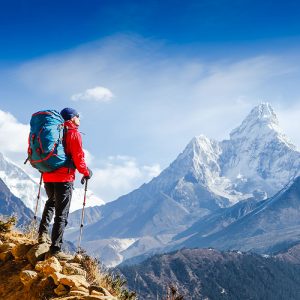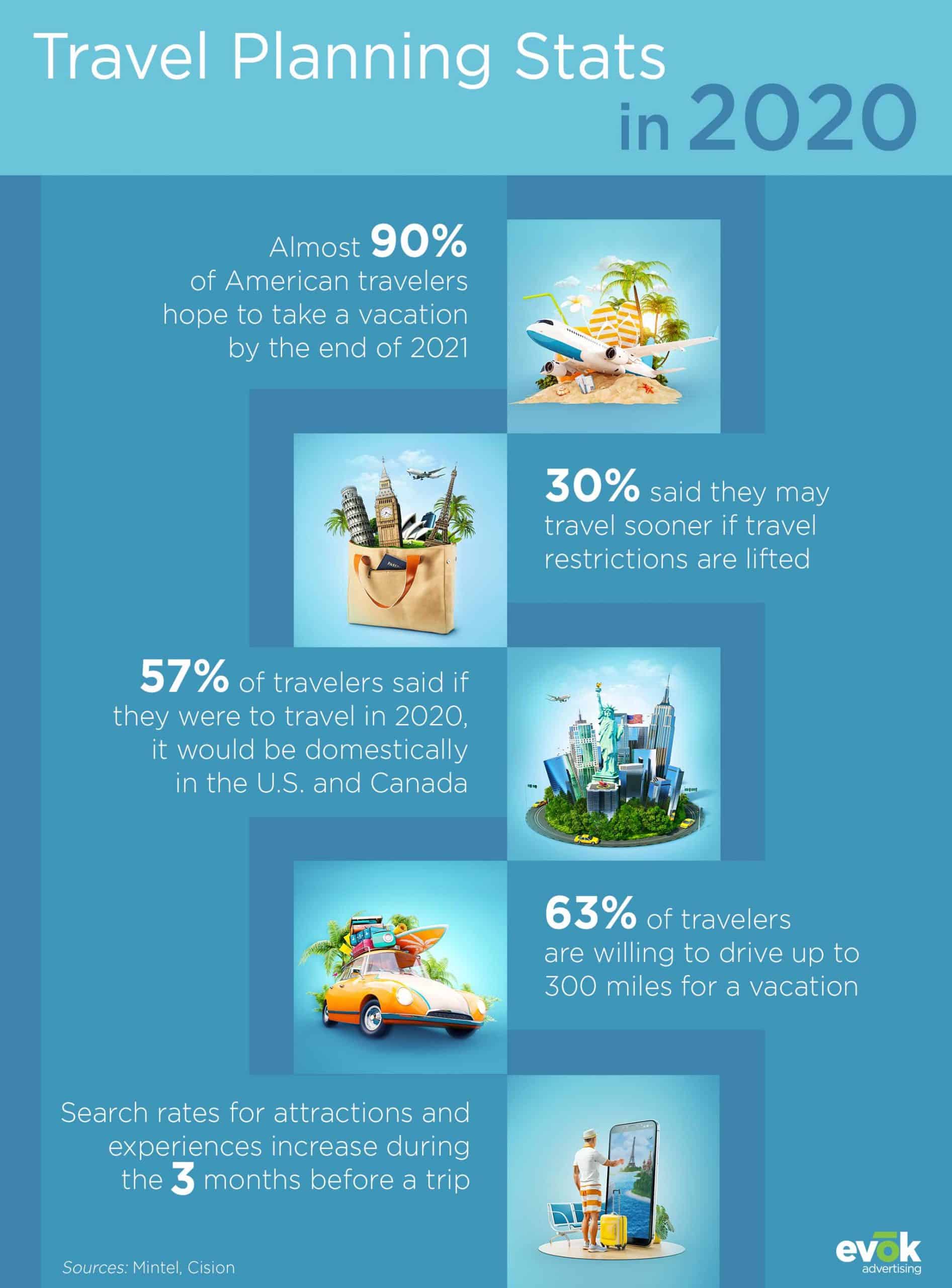
Gaining the Edge in Organic Search with Your Digital Travel Marketing

People love to travel. As travel limitations slowly ease across the world, consumers are eager to get back to exploring, and every vacation starts with plenty of research beforehand. Twenty-five percent of domestic travelers say they actively research new trips at least once a month. Another study found that search rates for local attractions and experiences increase during the three months before a trip. How can the travel and tourism industry take advantage of these organic searches and increase website traffic? The key is search engine optimization (SEO), and at the core of SEO is user intent.
Search engines, like Google, want to provide users with results relevant to their search queries and offer value. To rank in that top spot of a search engine results page, you want to ensure your website is optimized and provide the information your audience needs. Here are a few ways you can gain the edge in organic search with your digital destination marketing strategy.
Write Relevant Title Tags
Title tags let Google know what is on your page and are the main text element used in search results. Each of the pages on your travel website should have a relevant title tag that implements search keywords and phrases that match user intent and align with what your audience is searching for. Also, make sure to keep title tags under 55 characters to avoid having words cut off.
Appealing to a user’s needs when creating a title tag can give you a significant advantage over your competitors. Focus on what your user is looking for when searching and build that into your title tags. This will grab the user’s attention and lead them to take action on your site.
Let’s say you’re a family-friendly beach resort, and you’re looking to offer families a great deal if they book a room with you. Mention your offer in your title tag and ensure the link takes users to a page that talks about the deal and the family-friendly amenities and activities you have to offer.
Consider this title tag by Moon Palace Cancun: “All Inclusive Deals for Vacations with Kids | Moon Palace Cancun.” In a few dozen characters, they highlight they are a kid-friendly resort and offer exclusive deals to families looking to vacation in Cancun. They also include the name of the hotel so that before a user clicks on the link, they already know what resort website they are visiting.
Keep in mind title tags are not an opportunity to string together keywords and search terms you want to rank for if your page does not provide that content. Users will feel misled to irrelevant content and search engines may dock your site as well.
Create Unique Meta Descriptions
Meta descriptions communicate with users what they can expect to see on your page and can help increase click-through-rate (CTR). But there’s an art to these, too. The main goal is to drive clicks and further capture interest. Make sure to keep the meta description brief, yet descriptive, between 150-160 characters. Use emotionally-charged and compelling language to help users imagine your location and the services you provide. Plus, include a call-to-action that encourages users to click on your result.
Going back to the Moon Palace Cancun example, underneath their title tag, they have this meta description: ‘Enjoy an unforgettable all-inclusive family-friendly vacation in Cancun, while luxuriating in the finest amenities & world-class service. Check more here!’ Their use of descriptive language like ‘unforgettable’ and ‘luxuriating’ tell a story of the kind of vacation they could have at the Moon Palace before even clicking on the link and seeing the images. They also include a call-to-action, ‘check more here!’ to draw the user to click the link, spend time on the website, and hopefully book a room.
Produce Quality Content
One of the secrets to gaining organic traffic is offering fresh, quality content to users. Not only does the Google algorithm reward websites that are putting out new content on a regular basis, but it gives you more opportunities to attract your target audience and get them to spend time on your site. Stay on top of relevant trends, create “how-to” blog posts, and frequently update older content to make sure you’re providing useful and timely information, even after its first published.
Alaska Airlines posts multiple blog posts per week about different topics that might attract their audience. These include travel tips to make the most out of destinations that the airline flies to, the redesign of Alaska Airlines’ fleet of uniforms, or self-care in the air. These all provide interesting and useful information that can help a user better understand the company and all they have to offer. And who knows, maybe while reading a blog post, the user sees a flight offer ad and decides to book a trip.
Micro-Moment Content

In 2016, Google encouraged the travel industry to create micro-moment content to meet users’ needs in each stage of the travel journey. Creating content around micro-moments allows travel businesses to serve travelers while improving organic search performance. Let’s break down each of these micro-moments and explore examples of content that you can create to reach your target audience.
Dreaming Moments
Have you ever seen a picture of your friend’s Hawaiian vacation and decided to do some Google research to see how you could re-create that vacation? Users in dreaming moments are in that exact place, letting their wanderlust roam free on the internet. Users at the top of the sales funnel are searching for long-tail queries, like “how to book a Hawaii vacation,” and conducting general research, like “Hawaii vacation.”
At the dreaming stage, don’t overload users with prices and deals. Instead, provide imagery of your destination, hotel, or attractions so they can imagine their version of the holiday. Partner with an influencer and have them write a blog post about their experience at your destination or post areal videos of the landscape. All these things will lure the user to step into the next level of the sales funnel—the planning process.
Planning Moments
With a destination or holiday type in mind, travelers are ready to get into some intense research to find the best hotel, flights, and deals. Users know what they want and want to find the answer to their queries quickly. If they are looking to book a holiday in a location with mountains, they’ll expect easy access to related content without much effort.
If you aim to attract visitors looking to visit the Great Smokey Mountains, make sure your title tag and meta descriptions mention your end-of-year booking special or offer a planning guide for an unforgettable vacation in the mountains.
Booking Moments
Now that a traveler knows what kind of vacation they want and what it takes to make it happen, they are ready to book their trip. Make sure your online travel booking system functions seamlessly, with clear information laid up front and an easy step-by-step process.
This moment is all about standing out amongst your competitors. If a user is looking to book a flight, you want to differentiate your airline. Ensure you have a clear offer in your title and highlight the benefits of flying with your brand as opposed to the brand right below you in the search engine results page. In short, make your brand irresistible.
Experiencing Moments
Once a traveler books a trip, they want to start planning what they will do once they get there. This means that travel and tourism companies can go beyond the sale and make a meaningful and lasting connection with their customer.
Show your visitors how they can make the most out of their holiday. Create content and provide resources about the location they will be visiting. Write a blog post about the top 10 things to do around your hotel, provide links to local restaurants for tourists to visit, highlight romantic spots in the city for a proposal, or family-friendly attractions that will appeal to all ages in the family.
Almost 90% of American travelers hope to take a vacation by the end of 2021, and 30% said they might travel sooner if travel restrictions are lifted. This means travel and tourism brands need to get to work on their travel SEO strategies. If your marketing plan was shaken up because of the pandemic earlier in the year or you’re just not sure where to start optimizing your site, consider hiring an advertising agency to help your brand stand out.